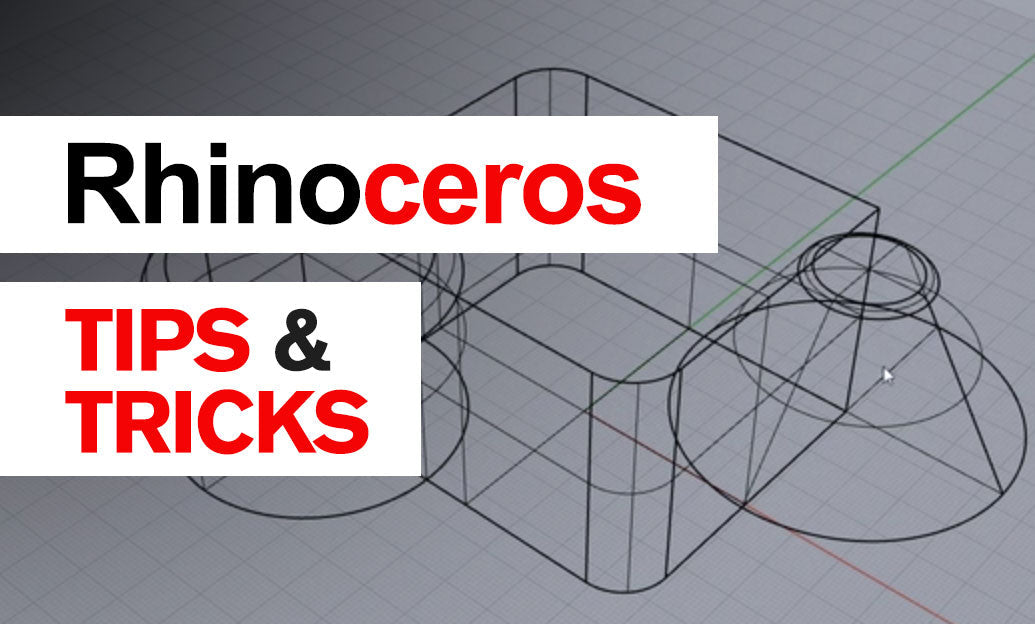Your Cart is Empty
Customer Testimonials
-
"Great customer service. The folks at Novedge were super helpful in navigating a somewhat complicated order including software upgrades and serial numbers in various stages of inactivity. They were friendly and helpful throughout the process.."
Ruben Ruckmark
"Quick & very helpful. We have been using Novedge for years and are very happy with their quick service when we need to make a purchase and excellent support resolving any issues."
Will Woodson
"Scott is the best. He reminds me about subscriptions dates, guides me in the correct direction for updates. He always responds promptly to me. He is literally the reason I continue to work with Novedge and will do so in the future."
Edward Mchugh
"Calvin Lok is “the man”. After my purchase of Sketchup 2021, he called me and provided step-by-step instructions to ease me through difficulties I was having with the setup of my new software."
Mike Borzage
Rhino 3D Tip: Maximizing Efficiency with the Command Line in Rhino 3D
May 04, 2025 3 min read

The command line in Rhino 3D is an essential tool that offers a direct and efficient way to interact with the software. Mastering its use can significantly enhance your modeling workflow by reducing the time spent searching for commands through menus and toolbars. Below are some tips to make the most out of the command line in Rhino 3D:
-
Utilize Keyboard Shortcuts: Many commands in Rhino have default keyboard shortcuts. Familiarizing yourself with these can greatly speed up your workflow. For example, pressing
Ctrl+Zfor Undo orFfor the Fillet command saves time. - Leverage the AutoComplete Feature: As you type in the command line, Rhino suggests commands that match your input. This feature allows you to enter commands quickly without remembering the exact spelling. Simply start typing, and select the desired command from the list.
-
Create Custom Command Aliases: Rhino allows you to create custom aliases for commands. This is particularly useful for frequently used commands. For instance, you could set
LOas an alias for the Loft command. To set up aliases, go to Options > Aliases. - Access Command Options: Many commands have options that can modify their behavior. These options appear on the command line after initiating a command. Pay attention to these options and adjust them as needed to get the desired results.
-
Repeat Last Command Easily: Pressing
Enteror theSpacebarrepeats the last command used. Additionally, right-clicking in the viewport without selecting anything also repeats the last command. This is extremely helpful for tasks that require repetitive actions. - Navigate Command History: Use the up and down arrow keys to scroll through your recent command history. This allows you to reselect recent commands without retyping them, saving time and effort.
- Use Command Line for Precision Input: When exact measurements are required, you can type numerical values directly into the command line. This is especially useful for defining distances, angles, or coordinates with precision.
- Monitor Feedback and Prompts: The command line provides real-time feedback and prompts that guide you through the steps of complex commands. Reading these prompts carefully ensures that you execute commands correctly and efficiently.
- Error Messages and Notifications: If a command doesn't work as expected, the command line often displays error messages or notifications explaining why. This information can help you troubleshoot issues quickly.
- Script and Macro Execution: Advanced users can execute scripts and macros directly from the command line. This opens up possibilities for automating tasks and creating more complex models with ease.
- Cross-Platform Consistency: The command line functions the same way on both Windows and Mac versions of Rhino. This consistency allows you to apply the same workflow regardless of the operating system you are using.
- Integrate with Plugins: Many Rhino plugins utilize the command line for additional functionalities. Familiarity with the command line ensures you can fully leverage these plugins in your projects.
Incorporating these practices into your modeling routine can dramatically improve your efficiency and precision in Rhino 3D. The command line is more than just a text input; it's a powerful interface that, when used effectively, becomes an invaluable asset in your design toolkit.
For further insights and professional advice on maximizing your use of Rhino 3D, visit NOVEDGE, the leading online store for design software and hardware. NOVEDGE offers a wide range of resources and expert support to help you achieve the best results in your projects.
You can find all the Rhino products on the NOVEDGE web site at this page.
Also in Design News

Revolutionizing CAD: Automated BOM Generation for Enhanced Precision and Efficiency
August 28, 2025 10 min read
Read More
Cinema 4D Tip: Effective Use of the Morph Tag in Cinema 4D for Smooth Shape Transitions
August 28, 2025 3 min read
Read MoreSubscribe
Sign up to get the latest on sales, new releases and more …



